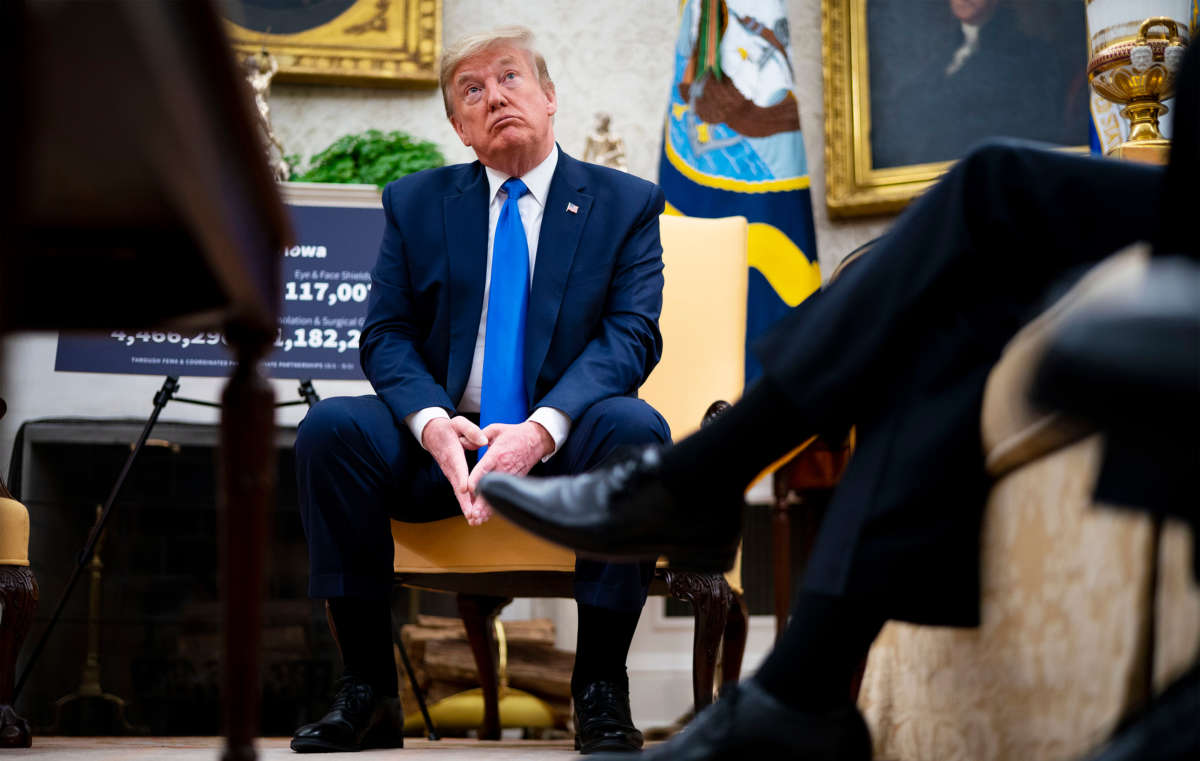Amid dire unemployment numbers that were released Friday morning, President Donald Trump made a bold promise that “those jobs will all be back and be back very soon” — an outcome that many economists over the past few weeks have said is highly unlikely.
Unemployment figures for April were released on Friday morning, detailing the economic impact of the coronavirus pandemic in the United States up to this point. According to those figures, 20.5 million Americans lost their jobs last month, bringing the unemployment rate up to 14.7 percent, the highest it’s been since the Great Depression.
The total loss in jobs last month is a record, the highest jump ever seen in a single month. The rise in the total number of people losing their jobs is so significant that it’s 25 times greater than the rise even in the worst month observed during the Great Recession more than a decade ago.
During a Fox News interview on the network’s morning program “Fox & Friends,” Trump was quick to make a lofty claim that jobs would recover at a quick pace.
“Next year, we’re going to have one of the best years we’ve ever had. We created the best economy in the history of the world…” Trump said. “People are ready to go.”
Economists are more skeptical about a fast recovery.
Positive transitions away from economic downturn typically take one of three different paths — a fast recovery (like what Trump is suggesting will happen) is called a V-shaped curve, as the economy shrinks but then comes back just as fast. A U-shaped curve tends to be a longer, more gradual transition back to where things were. And a W-shaped curve is where the economy shrinks, gets better, then shrinks again, continuing that pattern sometimes more than once, before a full recovery is made.
Researchers at Oxford Economics predicted in April that a longer recovery is most likely to happen.
“Looking ahead, we foresee a U-shaped rebound given the severity of the economic and labor market shock and the expectation for a gradual and uneven resumption of activity,” those researchers wrote. “Unlike a light switch that’s flipped on instantly, this recovery will resemble a dimmer that’s gradually eased up over months.”
But a W-shaped curve could also happen, especially if economies in a number of states end their stay-at-home orders too swiftly, resulting in a greater spread of COVID-19 and the need to close economies down again in order to deal with a second wave of the disease. Indeed, the Oxford researchers’ assumptions were made based on the belief that social distancing measures would continue on through May, not be relaxed sooner, as some states have begun doing.
Other economists are saying it will take years before the economy returns to where it once was. Mark Zandi, chief economist at Moody’s Analytics, has suggested that a recovery could begin next year, but that it won’t be resolved by the time Trump is saying it will be.
“The second half of next year should be strong in terms of growth, and I expect 2022 to be a very good year for growth. But we won’t get back to full employment until well into 2023,” Zandi said to CNBC in early April.
Even if the economy recovers next year, it will be a slow and painful return to normal for much of the American workforce. Zandi is predicting that 10 percent of small businesses (defined as companies with 500 or less workers employed) could fail completely due to the economic downturn.
With small businesses making up 49.2 percent of all private-sector employment in the country, that means Trump’s promise that all jobs will “be back and be back very soon” is highly unlikely to come to fruition.
